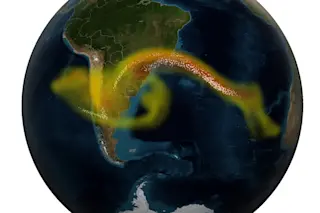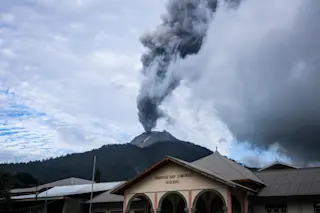“The Ring of Fire is really active!” Yup, that’s what the headlines say. The supposed “Ring of Fire” — the chain of volcanoes and earthquakes that sits at the edge of the Pacific Ocean — appears to be in the news a lot right now because of the eruptions in the Philippines and Indonesia and earthquakes in Alaska and California. However, this is all normal for these parts of the world, so let’s not get all worked up about it.
Let’s start off with the basics: the “Ring of Fire” is not a thing, geologically-speaking. Maps of this supposed ring of doom show it skirting around the Pacific Ocean from southern Chile, up the coast of South America to the west coast of North America, up over Alaska and Kamchatka, swinging south to get Japan and the Philippines … then takes a weird jog to the west to include Indonesia ...














